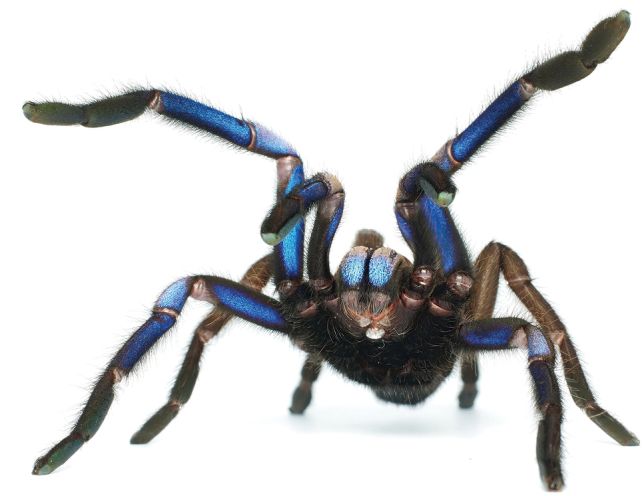A newly discovered tarantula in Thailand catches the eye with its vivid blue appearance. The researchers who found it have named it Chilobrachys natanicharum. Remarkably, it’s the first known tarantula species to inhabit Thailand’s mangrove forests, underscoring the importance of preserving such unique ecosystems for their distinct biological diversity.
Interestingly, this tarantula was not entirely unknown; it had been circulating within the exotic spider market under the name of the Electric Blue Tarantula. However, it had not been scientifically documented, nor was its natural habitat known. The exploration for this creature was led by arachnologist Narin Chomphuphuang from Khon Kaen University, following last year’s discovery of another Thai tarantula species that resides in bamboo stalks.
Finding the Electric Blue Tarantula proved challenging due to its arboreal lifestyle. Researchers had to climb trees and navigate through humid, slippery conditions to coax the spiders out of their hollowed tree homes. Blue is an uncommon color in nature, largely absent in flora, but it does occur in some animals, primarily birds, fish, and certain insects. For this tarantula, the striking blue is not due to pigments. Still, it is a result of structural coloration: microscopic structures in its body reflect light in such a way as to produce the blue and violet shimmer.
Recent discoveries have shed light on the mystery of the tarantula’s blue coloration. It turns out that various tarantula species worldwide, although distantly related, all display a similar hue of electric blue due to differing nanostructures in their bodies. This blue coloration’s purpose or evolutionary advantage is still unknown, but it could serve a role in mating or other social behaviors among spiders. Chilobrachys natanicharum exhibits radiant colors on its legs and other body parts, most visible when it assumes particular postures, such as during defensive stances or courting rituals. Further research may help understand the significance of this dazzling coloration in spider-to-spider communication.
Currently, Chilobrachys natanicharum is considered one of the rarest known tarantula species, and it faces threats due to the endangerment of its natural mangrove habitat. The spider shows an exceptional ability to adapt, living in trees and terrestrial burrows in various types of forests. However, mangrove ecosystems are limited to living inside tree hollows due to tidal influences. The importance of taxonomy in identifying and understanding such unique species extends from satisfying public curiosity to crucial research that could help conservation efforts.

